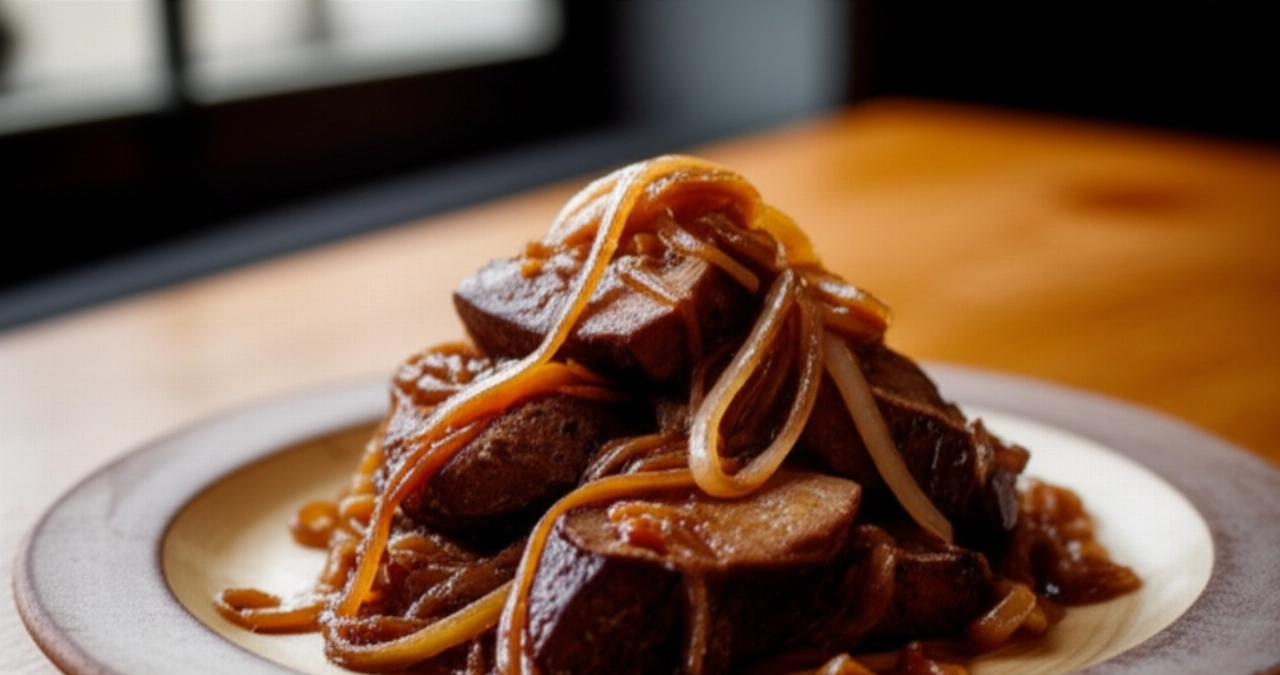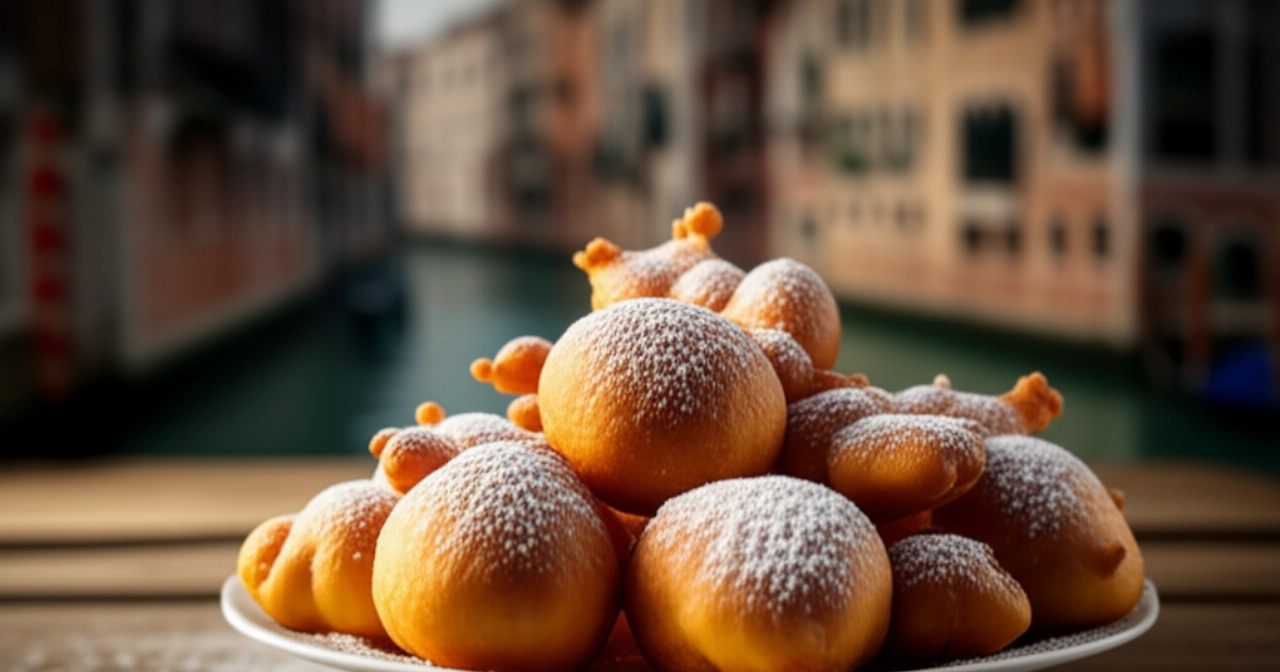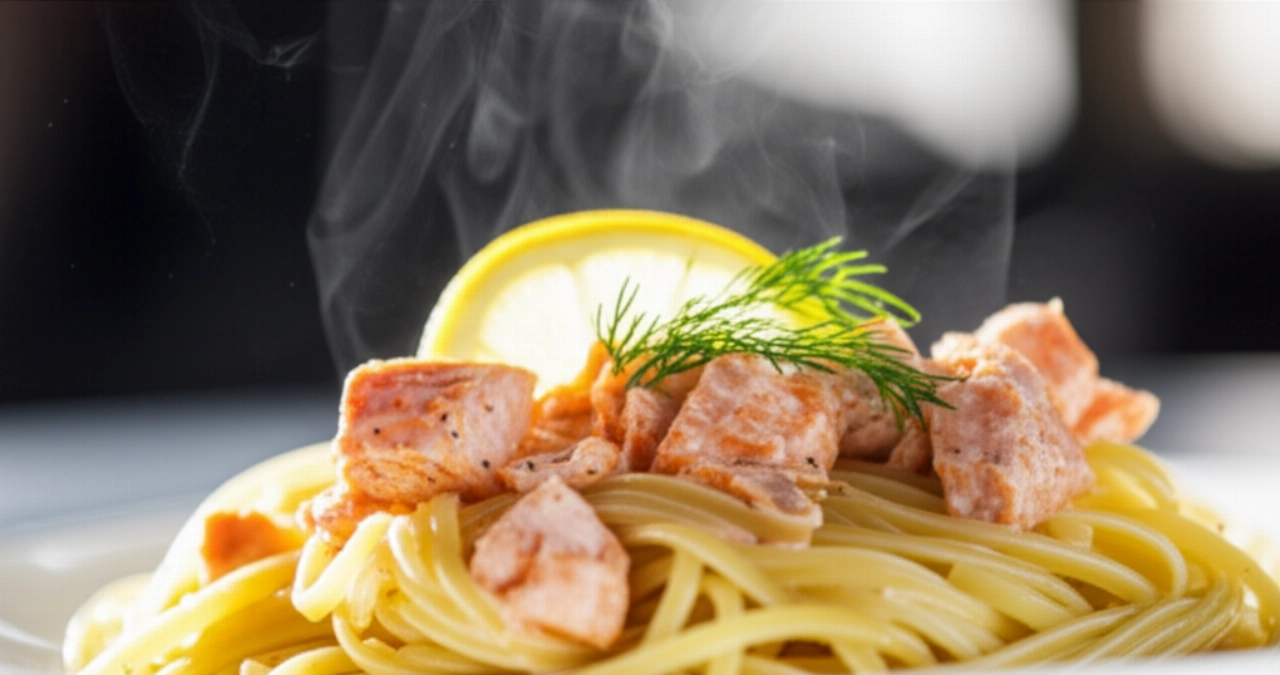There's a scent that smells of home, of a hug, of childhood memories. A flavor that warms the heart and soul, capable of taking you back in time, sitting at grandma's table. We're talking about Venetian-Style Pasta e Fagioli, a masterpiece of our culinary tradition, a dish that is much more than a simple soup: it's an experience.
But how many times have you tried to replicate it, only to get a result that's too watery, bland, or far from the true tradition? The fear of making mistakes, wasting precious ingredients, and not achieving that unmistakable thickness and creaminess can be a real obstacle.
Make yourself comfortable. Here you won't just find a list of ingredients, but the definitive guide, full of tricks and tips, to prepare a Venetian-Style Pasta e Fagioli so thick, creamy, and flavorful that you'll immediately feel at home. Success is guaranteed, I promise you. I'll guide you step by step to achieve an incredibly thick, creamy, and authentic-tasting Venetian-Style Pasta e Fagioli, just like grandma used to make it, with no secrets or difficulties.
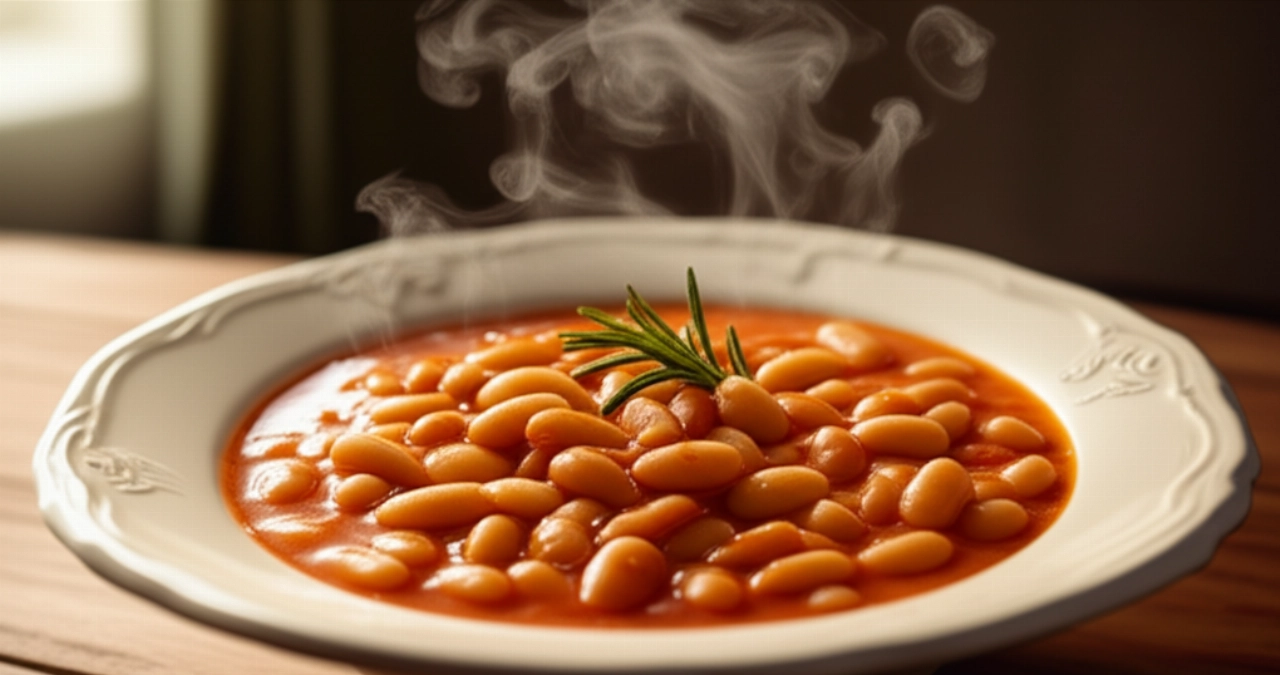
Ingredients for Authentic Pasta e Fagioli: The Choice That Makes a Difference
Every great dish begins with carefully selected ingredients. It's not just about quantity, but about quality and understanding the role each plays in the final result. Here's what you need and why:
- Dried Borlotti Beans (or Fresh): They are the soul of Venetian pasta e fagioli. Dried borlotti beans, once soaked and cooked, release starch and flavor, fundamentally contributing to the thickness and creaminess. If using fresh, cooking time is reduced, but the flavor is even more intense. Why: Their floury texture is perfect for creating that natural 'cremina' we're looking for.
- Mixed Short Pasta (or Ditalini): Venetian tradition favors short pasta, often a mix of different shapes or classic ditalini. The important thing is that they are of good quality, able to hold their shape during cooking and absorb the broth without falling apart. Why: The pasta cooks directly in the soup, releasing starch and contributing to the final thickness.
- Lardo or Pancetta Tesa (Cured Pork Fat or Flat Pancetta): This is the true secret of the Venetian soffritto. A finely chopped piece of lardo or pancetta tesa slowly melted releases a flavorful fat that is the aromatic base of the dish. Why: It adds depth of flavor and an unmistakable note that only well-browned animal fat can provide.
- Vegetables for Soffritto (Carrot, Celery, Onion): The classic mirepoix for an aromatic and sweet soffritto. Why: They are the base of any good broth and soup, providing sweetness and aromatic complexity.
- Vegetable or Meat Broth (Homemade): Good broth is essential. If you have time, prepare it at home with fresh vegetables and perhaps some meat bones for a richer flavor. If you're in a hurry, a good quality vegetable broth will do, but avoid overly salty bouillon cubes. Why: It's the cooking liquid that infuses flavor into the beans and pasta.
- Tomato Paste (a little): Just a teaspoon, to add a touch of color and a slight acidity that balances the flavors. It should not dominate. Why: It serves to add an accent, not to turn the soup into a sauce.
- Extra Virgin Olive Oil: To complete the soffritto and for a drizzle at the end of cooking. Why: Good oil enhances flavors without overpowering them.
- Salt, Freshly Ground Black Pepper: To balance and add vibrancy.
- Parmigiano Reggiano (for serving): A final sprinkle is a must. Why: It adds savoriness, umami, and creaminess when melted.
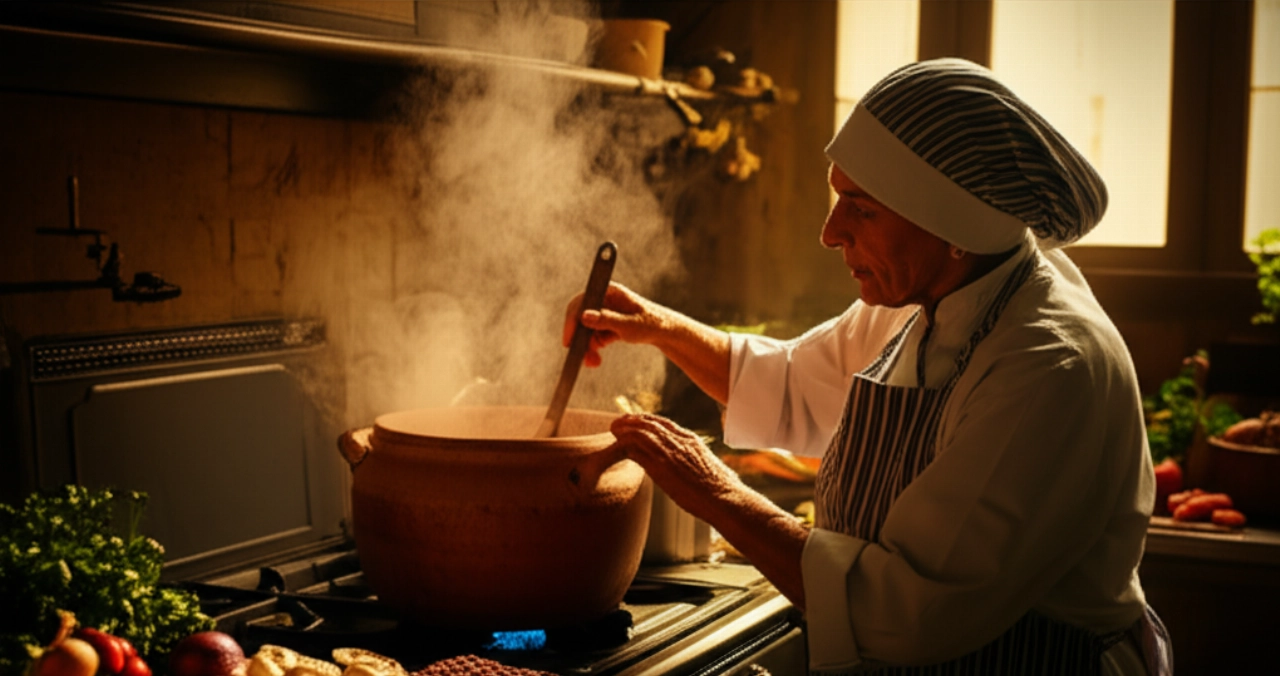
3 Common Mistakes That Ruin Your Pasta e Fagioli (and How to Avoid Them)
Even the most experienced cooks can fall into these traps. Knowing them will help you avoid them and ensure the success of your dish.
- Not Soaking or Cooking the Beans Properly: This is the most serious mistake. Dried beans require long soaking (at least 12 hours) and slow, prolonged cooking until they are very tender. Hard or undercooked beans will make the soup grainy and indigestible. How to avoid it: Plan the soaking time in advance. Cook them in unsalted water until they easily fall apart between your fingers. You can add a piece of kombu seaweed or a teaspoon of baking soda to the soaking water to make them more digestible and slightly speed up cooking.
- Using Too Much Tomato or Non-Traditional Ingredients: Venetian-Style Pasta e Fagioli is not a pasta with sauce. Tomato should only be an accent, not the main character. Also avoid ingredients like sausage or too many aromatic herbs that would distort the authentic flavor. How to avoid it: Limit tomato paste to one teaspoon. Focus on the flavor of the beans, lardo, and soffritto.
- Not Creating the Right Creaminess: Often, pasta e fagioli turns out too watery or, conversely, too thick but without that characteristic "cremina." This happens if the beans are not 'broken down.' How to avoid it: Halfway through cooking the beans, or before adding the pasta, take about a third of the cooked beans and mash them with a fork or quickly blend them with an immersion blender (without overdoing it, it shouldn't become a smooth cream). Reintroduce this puree into the soup. The starch from the beans themselves will provide the perfect thickness.

Grandma's Secret: That Magical Touch for Perfect Creaminess
I still remember my grandmother, with her knowing hands and a sly smile, explaining her trick for pasta e fagioli to me. It wasn't just the slow cooking of the beans, nor the fragrant soffritto with lardo slowly melting. Her true secret was the moment when, after cooking the beans, she would take a portion and mash them with a fork directly in the pot, against the sides. She didn't use blenders, saying that way you'd lose the soul of the bean. That simple gesture, almost a ritual, released all the starch and created a thick, velvety base, without the need for thickeners. It was her signature, the touch that made her pasta e fagioli inimitable, a true hug.
Another small piece of advice she passed down to me is not to rush. Pasta e fagioli is a dish that requires time, both for cooking the beans and for the flavors to meld. And, if possible, prepare it the day before: resting works wonders, allowing the flavors to bind and the soup to reach its maximum thickness and deliciousness.
Let's Prepare Venetian-Style Pasta e Fagioli Together: The Step-by-Step Guide
Ingredients (for 4-6 servings):
- 250 g dried borlotti beans (or 500 g fresh)
- 100 g lardo or flat pancetta
- 1 medium carrot
- 1 celery stalk
- 1 small onion
- 1 teaspoon tomato paste
- 1.5 - 2 liters vegetable or meat broth (even from a good quality bouillon cube)
- 200 g mixed short pasta or ditalini
- Extra virgin olive oil
- Salt and freshly ground black pepper to taste
- Grated Parmigiano Reggiano for serving
Preparation:
- Soaking and Cooking the Beans: If using dried beans, soak them in plenty of cold water for at least 12 hours (or even 24, changing the water a couple of times). After soaking, drain and rinse them well. Place them in a large pot with unsalted cold water and bring to a boil. Cook them over low heat for about 1-1.5 hours (or until very tender), skimming if necessary. If using fresh beans, skip soaking and cook them directly for about 30-40 minutes.
- Prepare the Soffritto: Meanwhile, finely chop the lardo or pancetta. In a heavy-bottomed pot (a terracotta or cast iron one is ideal), slowly melt the chopped lardo over very low heat until it becomes translucent and releases its fat. Finely chop the carrot, celery, and onion. Add the chopped vegetables to the melted lardo and sauté gently for at least 10-15 minutes, until they are softened and golden, but not burnt. This is the secret to a flavorful soffritto!
- Add the Tomato Paste: Stir in the teaspoon of tomato paste into the soffritto, mix well, and cook for a couple of minutes.
- Combine the Beans: When the beans are cooked and tender, drain them (you can save the cooking water if you wish, but it's better to use broth for more flavor). Add them to the soffritto. Stir gently to let them absorb the flavors.
- Create the Creaminess (Grandma's Secret): Take about a third of the beans from the pot and roughly mash them with a fork or a food mill (or blend them for a few seconds with an immersion blender, without making them a smooth cream). Reintroduce the mashed beans into the pot. This step is crucial for thickness and creaminess.
- Add Broth and Cook: Pour in the hot broth until the beans are well covered. Bring to a boil, then reduce the heat and let it simmer for at least 20-30 minutes, stirring occasionally, to allow the flavors to meld well. The soup should thicken slightly.
- Cook the Pasta: Taste and adjust salt and pepper. Add the pasta directly to the soup. Cook it according to the package directions, stirring frequently to prevent it from sticking to the bottom. If the soup becomes too thick, add a little hot broth.
- Rest and Serve: Once the pasta is cooked, turn off the heat. Let the pasta e fagioli rest for 5-10 minutes with the lid on. This allows the pasta to absorb a bit more liquid and the flavors to settle, making the soup even creamier.
- Serve hot, with a drizzle of extra virgin olive oil and a generous sprinkle of grated Parmigiano Reggiano.
Tips and Frequently Asked Questions about Venetian-Style Pasta e Fagioli
Here are some answers to the most common questions you might have, to clear any doubts and make you feel even more confident.
Can I use canned beans?
Yes, you can, but the flavor and texture won't be the same as dried beans cooked from scratch. If you use them, rinse them very well under running water to remove the preserving liquid and add them to the soup only in the last 15-20 minutes of cooking, after creating the creaminess with a portion of them. They won't need long cooking.
What is the best pasta to use?
Venetian tradition favors mixed short pasta, often called 'pastina' or 'broken pasta,' or classic ditalini. The important thing is that it's a pasta that releases starch and holds up well to cooking in the soup, without becoming mushy. Avoid overly large or long pasta shapes.
My soup is too watery/thick, how can I fix it?
If it's too watery, you can take another small portion of beans and mash or blend them to increase the thickness. Alternatively, you can let it simmer gently, uncovered, to evaporate some liquid. If it's too thick, simply add a little hot broth until you reach the desired consistency. Remember that pasta absorbs a lot of liquid even while resting, so it's better to start with it a bit more watery.
Can I prepare Pasta e Fagioli in advance?
Absolutely! In fact, it's a dish that improves the day after, because the flavors have time to meld perfectly. You can prepare the bean soup and soffritto in advance and add the pasta only when reheating and serving. If you prepare it completely, when reheating, add a little hot broth because the pasta will have absorbed a lot of liquid.
Can I freeze Pasta e Fagioli?
Yes, you can freeze it, but it's advisable to do so without the pasta. Prepare the bean soup and freeze it in airtight containers. When thawing, heat it and cook fresh pasta directly in it. Pasta that has been frozen and then thawed tends to lose its texture and become mushy.
A Hug of Flavors: Your Pasta e Fagioli is Ready!
There you have it! Now you no longer just have a recipe, but all the secrets to bring a Venetian-Style Pasta e Fagioli to the table that will impress everyone, a dish that tastes of home, tradition, and love. Every spoonful will be a journey into the heart of Venetian cuisine, a true comfort food that warms the soul.
Don't be afraid to experiment and make this recipe your own. Cooking is an act of creativity and passion. But start with this solid and foolproof base, and you'll see that applause won't be lacking. It will be a guaranteed success, a dish that will make you say: 'This is the real Pasta e Fagioli!'
Have you tried our recipe? We're very curious to see your masterpiece! Leave a comment below, tell us how it went, or share a photo on Instagram by tagging @CercaRicette.it. If you loved this soup, you can't miss our recipe for Milanese Minestrone or a heartwarming second course like Creamed Cod. Continue exploring authentic cuisine with us!
